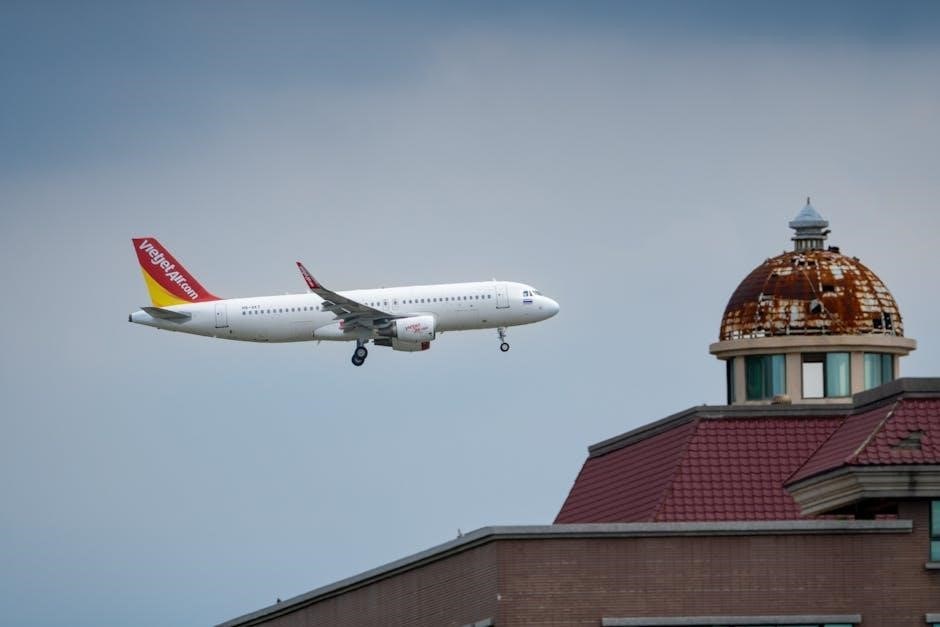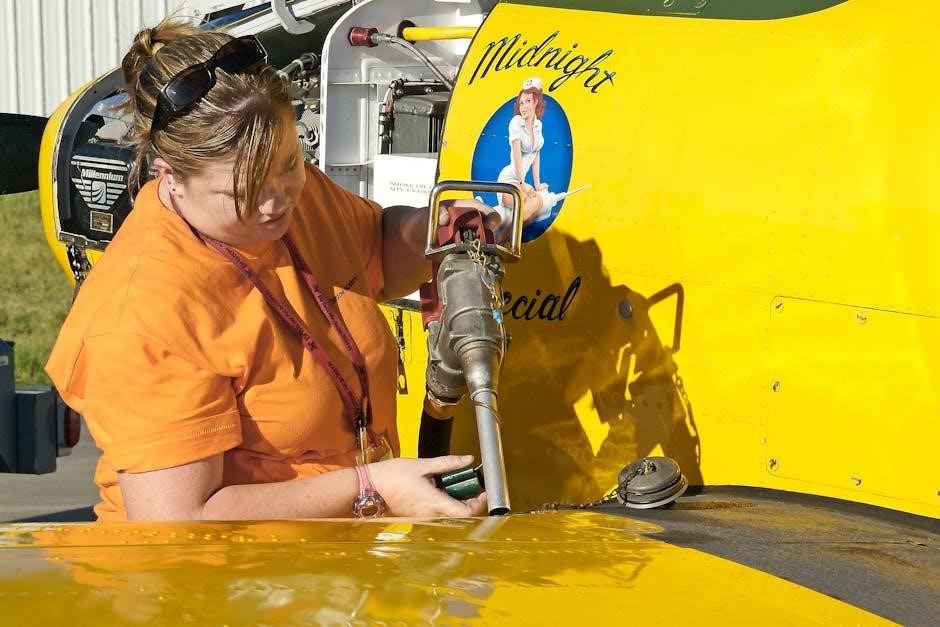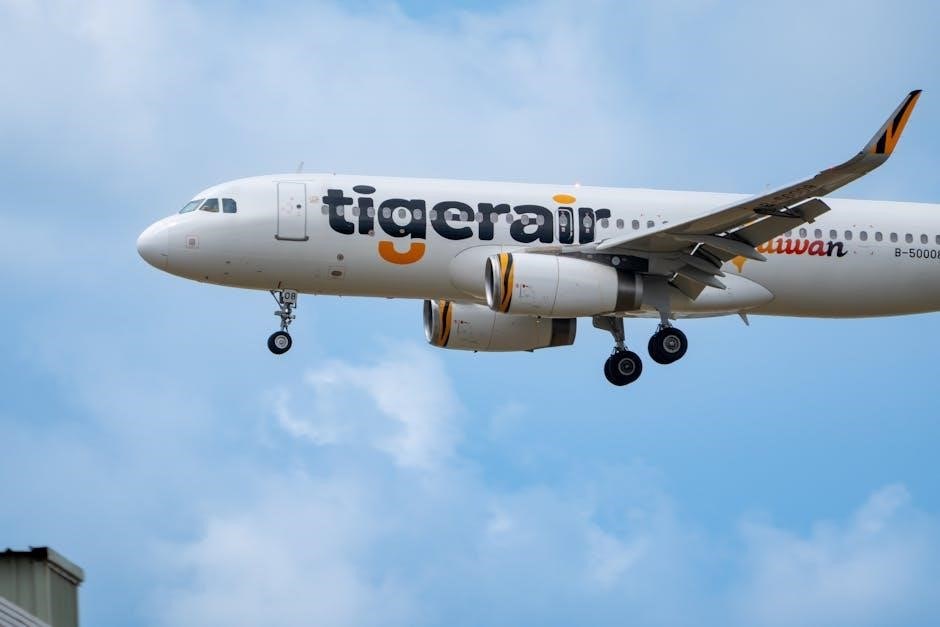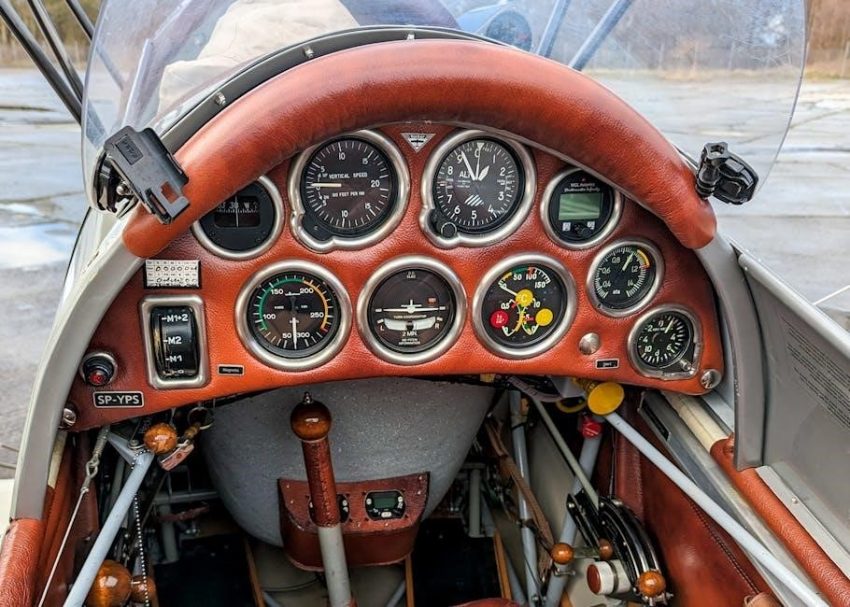The 2014 Honda Pilot Manual is an essential guide for owners, offering detailed instructions for operation, maintenance, and troubleshooting. It covers all models, ensuring comprehensive understanding. Available as a PDF download, the manual provides 488 pages of valuable information, helping drivers optimize performance and safety. Originally published by Honda, it remains a key resource for DIY enthusiasts and professionals alike, covering years from 2003 to 2024.
Importance of the Owner’s Manual
The 2014 Honda Pilot Manual is a critical resource for owners, providing essential information for optimal vehicle operation. It ensures understanding of features, maintenance, and troubleshooting, preventing costly repairs. The manual covers safety guidelines, warranty details, and technical specifications, making it indispensable for DIY enthusiasts and professionals. Available as a downloadable PDF, it offers convenience and accessibility, helping owners maximize performance and longevity of their vehicle. Regularly referencing the manual ensures proper care and adherence to manufacturer recommendations, enhancing safety and reliability. It is a vital tool for anyone aiming to maintain their Honda Pilot in peak condition.
Purpose and Structure of the Manual
The 2014 Honda Pilot Manual is designed to guide owners in understanding and maintaining their vehicle effectively. Structured logically, it begins with an introduction to the vehicle’s features and functions. The manual is divided into clear sections, such as maintenance, troubleshooting, and warranty information, ensuring easy navigation. Detailed diagrams and charts are included to simplify complex concepts. The purpose of the manual is to provide owners with a comprehensive reference for routine care, addressing common issues, and optimizing performance. It emphasizes safe driving practices and proper vehicle operation. By following the manual, owners can extend the lifespan of their Honda Pilot and ensure it runs at its best. This structured approach makes it an invaluable resource for both novice and experienced drivers.

Key Features of the 2014 Honda Pilot
The 2014 Honda Pilot offers a versatile SUV design, combining a powerful V6 engine with a spacious interior and advanced technology features, making it ideal for families and adventurers alike.
Engine and Performance Specifications
The 2014 Honda Pilot is equipped with a robust 3.5-liter V6 engine, delivering 250 horsepower at 5,700 rpm and 253 lb-ft of torque at 4,800 rpm. This engine features Honda’s i-VTEC (Intelligent Variable Valve Timing and Lift Electronic Control) technology, optimizing power and fuel efficiency. The Pilot achieves an estimated 20 MPG combined fuel economy, making it a practical choice for daily driving and long trips. The engine is paired with a 21-gallon fuel tank, ensuring extended range between refills. With its smooth power delivery and responsive acceleration, the Pilot handles both city commutes and highway cruises effortlessly. Its capability extends to towing, with a maximum capacity of up to 4,500 pounds when properly equipped. The engine’s reliability and performance make it a standout in its class, offering a balance of strength and efficiency for drivers seeking a versatile SUV.
Transmission and Drivetrain Options
The 2014 Honda Pilot features a smooth and efficient 5-speed automatic transmission, designed to deliver seamless shifting and optimal performance. This transmission is standard across all trim levels, ensuring consistent drivability. The Pilot offers two drivetrain options: front-wheel drive (FWD) and all-wheel drive (AWD). The AWD system provides enhanced traction and stability, particularly in inclement weather or off-road conditions. Honda’s Variable Torque Management (VTM-4) AWD system automatically distributes power between the front and rear wheels, improving handling and control. Both drivetrain options are paired with the 3.5-liter V6 engine, ensuring a balance of power and efficiency. The transmission and drivetrain combination contributes to the Pilot’s reputation for reliability and versatility, making it suitable for a wide range of driving scenarios. Whether navigating city streets or tackling rough terrain, the Pilot’s drivetrain options deliver a confident and responsive driving experience.
Interior and Exterior Design Overview
The 2014 Honda Pilot boasts a practical and durable design, both inside and out. Its exterior features a boxy SUV shape with a bold front grille, integrated bumper, and multi-reflector halogen headlights, creating a rugged yet refined appearance. The Pilot’s aerodynamic design helps reduce wind noise and improve fuel efficiency. Inside, the cabin is spacious and functional, offering seating for up to eight passengers. The second and third rows are foldable, providing ample cargo space for luggage, sports equipment, or other items. The dashboard is user-friendly, with a 3D instrument panel and a center console that includes storage compartments and controls for audio and climate systems. Higher trims feature premium materials, such as leather upholstery, and advanced tech like a multi-angle rearview camera and navigation system. The Pilot’s design emphasizes versatility, comfort, and ease of use, making it ideal for families and adventurers alike.
Technology and Safety Features
The 2014 Honda Pilot is equipped with a range of advanced technology and safety features designed to enhance driving comfort and security. The Pilot features an intuitive infotainment system with a touchscreen display, Bluetooth connectivity, and a multi-speaker audio system for seamless entertainment. A rearview camera is available on higher trims, providing improved visibility when reversing. The vehicle also includes Honda’s Multi-Information Display, which offers real-time data on fuel efficiency, navigation, and more. Safety-wise, the Pilot boasts a robust ACE body structure for enhanced crash protection, along with six airbags, including dual-front, front-side, and side-curtain airbags. Additional safety features include electronic stability control, anti-lock braking, and a tire pressure monitoring system. These technologies work together to ensure a safe and connected driving experience, making the 2014 Honda Pilot a reliable choice for families and adventurers.

Maintenance and Care
Regular maintenance is crucial for your 2014 Honda Pilot’s longevity and performance. Adhere to the recommended schedule in your owner’s manual for routine services. Timely oil changes, tire rotations, and inspections maintain your vehicle’s health. Use genuine Honda parts for reliability and safety.
Recommended Maintenance Schedule
Regular maintenance is essential to ensure the optimal performance and longevity of your 2014 Honda Pilot. The recommended maintenance schedule outlines specific services at designated mileage intervals. Oil changes are typically required every 5,000 to 7,500 miles, depending on driving conditions. Tire rotations should be performed every 7,500 to 10,000 miles to ensure even tread wear. Fluid checks, including engine oil, coolant, and transmission fluid, should be done at each service interval. Brake inspections, belt replacements, and air filter checks are also critical at specified milestones. Refer to your owner’s manual for the exact schedule, as Honda provides detailed recommendations based on normal and severe driving conditions. Adhering to this schedule helps maintain your vehicle’s reliability, performance, and warranty coverage.
DIY Maintenance Tips
Performing routine DIY maintenance on your 2014 Honda Pilot can save time and money while keeping your vehicle in top shape. Start with simple tasks like checking and replacing the engine air filter, which can improve fuel efficiency and performance. Regularly inspect and top off essential fluids, such as windshield washer fluid, coolant, and transmission fluid, using the guidelines in your owner’s manual. Tire pressure checks should be done monthly, and before long trips, to ensure optimal safety and fuel efficiency. For more hands-on projects, consider replacing the cabin air filter or rotating your tires to maintain even tread wear. Always use genuine Honda parts or equivalent quality replacements to ensure compatibility and reliability. If you’re unsure about a procedure, consult the manual or seek guidance from a trusted source to avoid potential damage. DIY maintenance fosters a deeper connection with your vehicle and helps prevent costly repairs down the road.
Fluid Check and Replacement Guidelines
Regular fluid checks are essential for maintaining the health and performance of your 2014 Honda Pilot. Start by locating the engine oil dipstick under the hood to monitor oil levels and condition. The coolant reservoir, brake fluid reservoir, and transmission fluid dipstick are also accessible for quick inspections. Always refer to the manual for specific locations and guidelines. Check fluid levels when the engine is cold for accuracy, and top off as needed using the recommended types specified in the manual. Replace engine oil every 5,000 to 7,500 miles, and coolant every 30,000 to 50,000 miles, depending on driving conditions. Brake fluid and transmission fluid should be inspected annually but typically require less frequent changes. Avoid overfilling, as this can damage system components. If you notice fluid leaks or unusual discoloration, address the issue promptly. Regular fluid maintenance ensures optimal performance and prevents costly repairs.
Tire Pressure and Rotation Recommendations
Proper tire pressure and rotation are crucial for optimal performance, safety, and fuel efficiency in your 2014 Honda Pilot. Check tire pressure monthly and before long trips, using the pressure values listed on the tire information placard or in the owner’s manual. Always measure pressure when tires are cold for accuracy. Underinflated tires can lead to reduced fuel efficiency and increased wear, while overinflated tires may compromise traction. Rotate tires every 5,000 to 7,500 miles, following the pattern recommended in the manual to ensure even tread wear and extend tire life. Inspect tires during rotations for signs of uneven wear, cracks, or damage. If uneven wear is detected, have your vehicle’s alignment checked. Proper tire maintenance not only enhances safety but also improves overall driving comfort and efficiency. Refer to your manual for specific guidance tailored to your vehicle’s needs.

Troubleshooting Common Issues
Troubleshooting common issues in your 2014 Honda Pilot involves identifying symptoms, referring to diagnostic charts, and performing basic checks to resolve problems efficiently and safely. Regular inspection helps.
Identifying and Addressing Common Problems
Identifying and addressing common problems in your 2014 Honda Pilot begins with recognizing unusual symptoms such as odd noises, warning lights, or performance issues. Refer to the manual’s troubleshooting section for guidance. Common issues include faulty oxygen sensors, malfunctioning transmission solenoids, or worn-out brake pads; For example, if the “Check Engine” light illuminates, use a code reader to determine the issue. If it’s a loose gas cap, tighten it and reset the light. For more complex problems like transmission slipping, inspect fluid levels and condition, and consult a mechanic if symptoms persist. Regular maintenance, such as oil changes and tire rotations, can prevent many issues. Always follow the manual’s recommendations for inspections and repairs to ensure reliability and safety on the road. Addressing problems early can prevent costly repairs and keep your Pilot running smoothly for years.
Diagnosing Dashboard Warning Lights
Dashboard warning lights in your 2014 Honda Pilot are designed to alert you to potential issues. The manual provides a detailed guide to understanding these indicators, which may include the “Check Engine” light, oil pressure warnings, or battery alerts. When a light illuminates, refer to the manual’s troubleshooting section to identify the specific issue. For example, a flashing “TPMS” light indicates a tire pressure problem, while a steady “ABS” light suggests a brake system malfunction. Some issues, like a loose gas cap, are simple to fix, while others may require professional attention. Always consult the manual for accurate diagnoses and follow recommended steps to resolve the issue. Ignoring warning lights can lead to more severe problems, so addressing them promptly is essential for maintaining your vehicle’s health and safety.
Resetting Maintenance and Trouble Codes
To reset maintenance and trouble codes on your 2014 Honda Pilot, follow the steps outlined in the manual. Start by locating the OBD-II port under the dashboard. Use an OBD-II scanner or code reader to access the vehicle’s computer system. Turn the ignition to the “ON” position and connect the scanner. Once connected, select the “Erase Codes” option to clear the trouble codes. After resetting, start the engine and check if the dashboard lights turn off. For maintenance codes, such as the “Maintenance Due” reminder, refer to the manual for specific instructions, as some codes may require a professional scan tool. Always ensure the issue is resolved before resetting codes, as ignoring problems can lead to further damage. If unsure, consult a certified Honda technician for assistance.
When to Consult a Professional Mechanic
There are several situations when it’s best to consult a professional mechanic for your 2014 Honda Pilot. If you encounter complex issues such as persistent warning lights, unusual noises, or decreased performance, seek expert assistance. DIY repairs may not address the root cause, potentially leading to further damage. For tasks requiring specialized tools or deep technical knowledge, such as transmission repairs or advanced diagnostics, a certified mechanic is essential. Additionally, if you’re unsure about a repair or maintenance procedure, consulting a professional ensures safety and correctness. Regular check-ups with a trusted mechanic can also help identify potential issues early, preventing costly repairs down the road. Always prioritize professional help for warranty-related repairs to maintain coverage. By involving a skilled mechanic, you ensure your vehicle remains reliable and performs optimally over time.

Warranty and Service Coverage
The 2014 Honda Pilot is backed by a comprehensive warranty program, including a 3-year/36,000-mile basic warranty and a 5-year/60,000-mile powertrain warranty, ensuring driver reassurance and protection against costly repairs.

Overview of Honda’s Warranty Program
Honda’s warranty program for the 2014 Pilot is designed to provide owners with peace of mind and financial protection. The program includes a 3-year/36,000-mile basic warranty, which covers repairs to defective parts and labor for components like the electrical system, cooling, and engine, excluding normal wear and tear items. Additionally, a 5-year/60,000-mile powertrain warranty ensures coverage for major engine and transmission components, offering extended protection against costly repairs. This comprehensive coverage reflects Honda’s commitment to reliability and customer satisfaction. Owners are encouraged to review the warranty terms in detail to understand what is included and any potential exclusions. Proper maintenance, as outlined in the manual, helps ensure warranty validity and optimal vehicle performance over time.
Coverage Details and Exclusions
The 2014 Honda Pilot’s warranty program includes specific coverage details and exclusions. The basic warranty covers most vehicle components for 3 years or 36,000 miles, while the powertrain warranty extends to 5 years or 60,000 miles. However, certain items are excluded, such as routine maintenance parts like air filters, spark plugs, and brake pads, which are considered normal wear and tear. Damage caused by modifications, misuse, or environmental factors like floods or hail is also not covered. Additionally, repairs due to neglect or improper maintenance, as outlined in the manual, may be excluded. Owners should review the warranty terms carefully to understand what is included and what is not. Proper adherence to the recommended maintenance schedule helps ensure warranty claims are honored without issues.
How to Use Your Warranty Effectively
To make the most of your 2014 Honda Pilot’s warranty, carefully review the terms and conditions outlined in the manual. Ensure all scheduled maintenance is performed as recommended, and keep detailed records of service visits, including dates, mileage, and repairs. This documentation is crucial for warranty claims. Always use authorized Honda dealerships for repairs and parts to maintain coverage. If an issue arises, report it to Honda promptly, as some repairs may require pre-approval. Be aware of the warranty’s expiration dates and mileage limits to avoid missed opportunities. Additionally, transferability of the warranty to a new owner can enhance the vehicle’s resale value. By following these steps, you can maximize the benefits of your warranty and protect your investment effectively.

Additional Resources
Access official Honda resources, including downloadable manuals, online forums, and authorized service centers, to enhance your 2014 Honda Pilot ownership experience.

Downloading the PDF Version of the Manual

The 2014 Honda Pilot manual is available for download as a PDF from Honda’s official website or authorized portals. This digital version provides easy access to all sections, including maintenance schedules, troubleshooting guides, and warranty details. To download, visit Honda’s owner resources page, enter your vehicle’s VIN or select the 2014 Pilot model, and follow the prompts to save the PDF. This format allows you to search for specific topics, print sections as needed, and access the manual on multiple devices. Ensure you download from a trusted source to avoid invalid or incomplete versions. Having a digital copy complements the physical manual and offers convenience for quick reference.
Online Forums and Communities for Support
Online forums and communities are invaluable resources for 2014 Honda Pilot owners seeking support and advice. Platforms like Honda Pilot forums, Reddit communities, and Facebook groups offer spaces to discuss the manual, share troubleshooting tips, and gain insights from experienced owners. These forums often feature discussions on maintenance, modifications, and common issues, providing practical advice beyond the official manual. Additionally, many communities include sections dedicated to DIY repairs and part recommendations, making them a comprehensive support network. Always verify the credibility of sources within these forums to ensure accurate and reliable information.
Authorized Dealerships and Service Centers

Authorized Honda dealerships and service centers are essential for ensuring your 2014 Honda Pilot receives expert care. These centers employ certified technicians who are trained to work specifically on Honda vehicles, guaranteeing high-quality service. They use genuine Honda parts and the latest diagnostic tools to maintain your vehicle’s performance and reliability. Whether it’s routine maintenance, repairs, or accessories, authorized centers provide a one-stop solution. Scheduling regular maintenance at these centers helps maintain your warranty and ensures compliance with Honda’s recommendations. Additionally, they offer personalized advice and support tailored to your vehicle’s needs. For peace of mind and optimal performance, rely on authorized Honda dealerships and service centers for all your 2014 Pilot’s servicing requirements.

